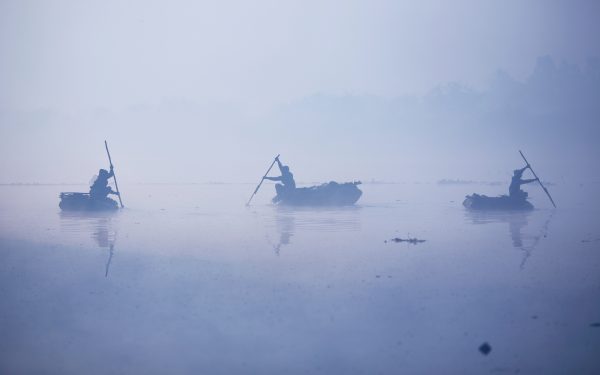While hydroelectricity is a viable alternative to the region’s current dependence on coal and imported oil, dams can have a devastating impact on the environment. The GBM is one of the most ecologically sensitive areas in the world and climate change is expected to intensify the severity and frequency of natural disasters in the near future. The region is currently home to 600 million people and the largest concentration of the world’s poor. Due to these ecological and socio-economic vulnerabilities, regional dams in the GBM require an unprecedented level of political and technical cooperation.
But due to the deep sense of mistrust between countries in South Asia, previous agreements on the GBM have focused almost exclusively on dividing water resources and multilateral approaches to river basin management have been largely overlooked.
One of the most widely accepted policy mechanisms for coordinating the development and conservation of water resources is the Integrated River Basin Management (IRMB) process. But while IRBM can account for the technical aspects of water resource development, it does little to resolve the primary impediment to cooperation — political conflicts in the region.
Our study on hydroelectric projects on the GBM suggests that managing water resources through a policy framework based on the concept of environmental peacebuilding can adequately address the political challenges of regional mistrust while incorporating the technical aspects of IRBM. Environmental peacebuilding involves the use of transboundary ecological cooperation to reduce wider political tensions and promote peace.
Several issues make environmental peacebuilding mechanisms particularly relevant to South Asia’s regional hydroelectric dams. Disputes related to transnational rivers between India and Nepal and India and Bangladesh are arguably the crux of the political conflict between New Delhi and these two countries.
In addition to the link between environmental issues and regional conflict, environmental disputes are said to be the biggest impediment to the success of the dam projects themselves. One of the most important concerns expressed by policymakers in Kathmandu is India’s refusal to compensate Nepal for the impact of regional dams on land resources and agriculture. Rather than the environmental externalities themselves, the bigger challenge is that regional dams are perceived simply as a source of hydroelectricity — broader issues related to flood mitigation, climate change and basin-wide management are not given due importance.
An environmental peacebuilding framework would aim to inform policy processes that can address the proximate environmental issues related to proposed hydroelectric projects. By exploiting the link between environmental issues and political conflict, this framework could also have a spillover impact on regional integration in the long run.
The primary objective of the framework would be to provide political legitimacy to the notion that multilateral cooperation on hydroelectric dams must be linked to water use, environmental protection and natural hazards. This expanded appreciation for water diplomacy can assist in overcoming the region’s historic practice of prioritising the division of water resources over collective environmental cooperation.
To achieve this change, several policy options are available.
First, the BBIN process needs to be expanded from a track one initiative to include non-state actors. Research institutions, citizen groups and community members play an important role in environmental peacebuilding programs and their contributions can be valuable to the planning of regional dams.
Second, the BBIN should consider having an external facilitator, preferably a multilateral development bank, to oversee the implementation of these projects. Such involvement may lead to the adoption of international environmental and social standards and an effective dispute resolution mechanism.
Third, the BBIN consortium should refer to other basin management organisations that have linked environmental cooperation to peacebuilding and regional integration. EcoPeace Middle East’s project on restoring the Lower Jordanian River by engaging top-down and bottom-up approaches is particularly relevant.
An environmental peacebuilding framework is a viable pathway to resolve the political impediments to regional hydroelectric dam projects in South Asia. For India, making environmental issues the focus of its interactions on the GBM will go a long way to creating stable political relations with Bangladesh and Nepal. Stable bilateral relationships are imperative for India to have overland access to the resource-rich and volatile states in its northeast.
Bangladesh and Nepal have been advocating for greater environmental, political and economic cooperation in the region for decades, undermined by India’s traditional preference for bilateral over multilateral cooperation. An environmental peacebuilding framework may be particularly attractive to the smaller countries of South Asia, as it would facilitate multilateral cooperation on environment and energy, with potential spillovers onto wider regional integration.
While regional dams provide an opportunity for the BBIN to finally undertake holistic development of the GBM, environmental issues may well be relegated to afterthoughts in these initiatives. Policymakers in South Asia should consider that while proximate environmental conflicts are the key impediments to these projects, environmental factors can also be instrumental in building lasting peace.
Mirza Sadaqat Huda is a Postdoctoral Fellow at the School of Social Sciences, Nanyang Technological University.
Saleem Ali is the Blue and Gold Distinguished Professor of Energy and the Environment in the College of Earth, Ocean and Environment, University of Delaware.

